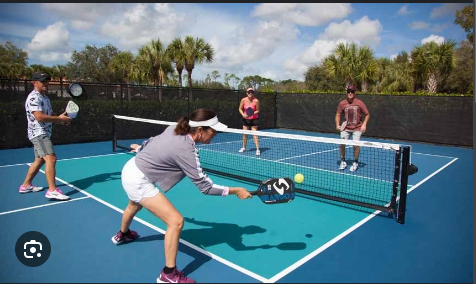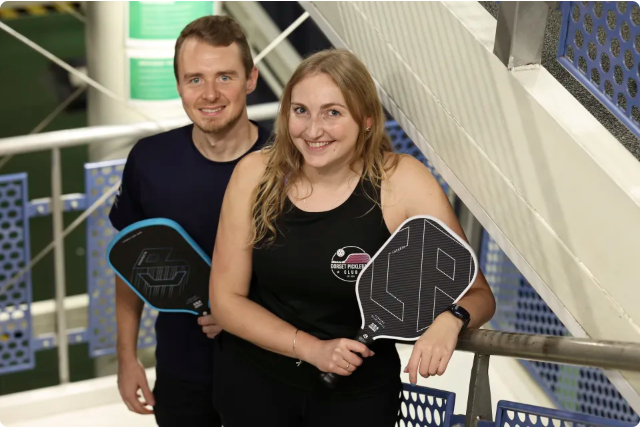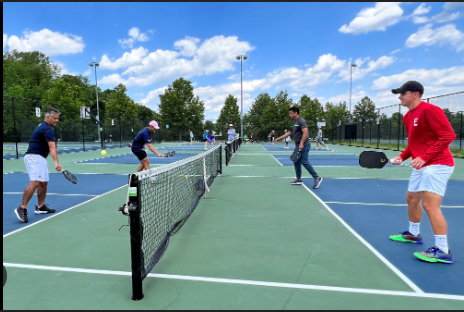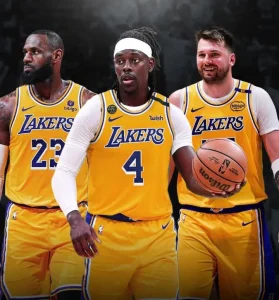
Pickleball: How a Fledgling Sport is Scaling Heights
In just a few years, pickleball has transformed from a niche activity to one of the fastest-growing sports in the world. Initially created in 1965 as a backyard pastime for families, the sport has evolved into a competitive and global phenomenon. The explosive growth of pickleball can be attributed to a variety of factors, including its accessibility, social appeal, and adaptability to different skill levels. In this article, we explore the reasons behind the sport’s rise, the key players, and how pickleball is carving out its place in the sports landscape.

**The Origins of Pickleball**
Pickleball was invented in 1965 by Joel Pritchard, a congressman from Washington State, and his friends Bill Bell and Barney McCallum. The story goes that the three were looking for a way to entertain their families on a lazy summer day. They combined elements of badminton, tennis, and table tennis to create a new game using a wooden paddle, a perforated plastic ball, and a badminton court.
The name “pickleball” is often attributed to Pritchard’s dog, Pickles, who would chase after the ball during games, though there are other theories about the origin of the name. Regardless, the game quickly gained popularity in the Pacific Northwest before spreading across the United States.
Over the next few decades, pickleball remained a relatively low-profile sport, mainly played in recreational settings. It wasn’t until the early 2000s that interest in the game began to surge, especially among older adults, who found it less physically demanding than tennis but still challenging and social.
**The Surge in Popularity**
**Accessibility and Inclusivity**
One of the primary reasons for pickleball’s rapid rise is its accessibility. Unlike tennis or other racquet sports that require significant skill and physical endurance, pickleball is easy for beginners to pick up and play. The rules are simple, and the smaller court size reduces the physical demands of the game, making it particularly appealing to older adults, people with limited mobility, and those new to sports.
Pickleball also attracts players of all ages, from children to seniors, fostering an inclusive environment. The game’s slower pace, smaller court, and lighter equipment make it less intimidating than other sports, while still offering plenty of opportunities for strategy and skill development. These factors have contributed to its broad appeal across demographics.
**Growing Infrastructure and Facilities**
As demand for pickleball grew, so too did the infrastructure. Communities across the United States and beyond began converting tennis courts and other recreational spaces into pickleball courts. According to the USA Pickleball Association (USAPA), there are now thousands of pickleball courts across the U.S., with more being built each year.
Public and private facilities are investing in pickleball-specific courts, as well as hosting leagues, tournaments, and social events. The sport’s accessibility, low startup costs, and minimal equipment requirements make it easy for community centers, schools, and parks to embrace it as a recreational activity. This widespread adoption has helped foster a more competitive and thriving ecosystem around the sport.
**The Role of Social Media and Celebrity Endorsement**

Pickleball’s rise has also been fueled by social media, where viral videos and celebrity endorsements have helped it reach a broader audience. Influencers, athletes, and celebrities, including LeBron James, Tom Brady, and Ellen DeGeneres, have publicly endorsed the sport, bringing further visibility to pickleball’s fun and social nature.
Additionally, social media platforms like Instagram and TikTok have allowed players and enthusiasts to share their experiences, training tips, and impressive trick shots, helping to create a community of enthusiasts that fosters growth. Pickleball influencers and content creators have become integral to its visibility, and as the sport continues to grow, so does the online community.
**Pickleball’s Competitive Scene**
While many people initially play pickleball for fun and recreation, the sport has grown into a serious competitive activity. In fact, the competitive landscape of pickleball has been a significant factor in its mainstream acceptance.
**Professional Leagues and Tournaments**
The creation of professional pickleball leagues has played a crucial role in elevating the sport to the next level. The Professional Pickleball Association (PPA) and the Association of Pickleball Professionals (APP) have established circuits for both men’s and women’s competitions, offering high-stakes tournaments across the country.
One of the sport’s most prestigious events is the US Open Pickleball Championships, held annually in Naples, Florida. This event attracts top players from around the world and draws thousands of spectators. The increasing prize money at tournaments has also helped elevate the sport’s legitimacy and appeal to professional athletes.
**Notable Pickleball Athletes**
As the competitive scene has grown, a number of elite players have emerged as household names within the pickleball community. These athletes have brought a level of athleticism and strategy that has captivated fans. Some of the most well-known professional players include:
– **Ben Johns**: Widely considered the best pickleball player in the world, Ben Johns has dominated multiple national and international tournaments.
– **Simone Jardim**: A former tennis professional turned pickleball champion, Jardim has won numerous national titles and is a key figure in the women’s professional circuit.
– **Tyson McGuffin**: Another top-tier player, McGuffin is known for his fast-paced playing style and has been a leading competitor in men’s singles and doubles events.
These athletes have helped raise the profile of pickleball, showcasing its potential as a competitive sport that requires skill, agility, and mental acuity.
## **The Future of Pickleball**
**International Growth and Global Reach

Pickleball’s rise is not confined to the United States. The sport is growing rapidly in countries around the world, including Canada, Mexico, and even Europe and Asia. The International Federation of Pickleball (IFP) has been instrumental in promoting the sport globally, helping to organize international tournaments and establish official pickleball rules and regulations.
The global expansion of pickleball is fueled by its inherent appeal as a sport that can be played anywhere, by anyone. The small court size, minimal equipment requirements, and low cost of entry make it an ideal sport for countries with limited resources or infrastructure for more traditional sports.
**Corporate Investment and Sponsorship**
As pickleball’s popularity continues to climb, so too does corporate interest in the sport. Major brands, including sporting goods companies, apparel brands, and beverage companies, have started sponsoring events and investing in the growth of pickleball. Equipment manufacturers like Selkirk Sport, Paddletek, and Onix are leading the way in providing specialized paddles, balls, and other gear for both recreational and professional players.
With the influx of corporate sponsorship and media attention, the future of pickleball looks increasingly bright. The sport’s rising visibility, combined with increased investment and infrastructure development, signals that pickleball could soon become a fixture in the mainstream sports world.
**Conclusion: A Sport for the Ages**

Pickleball’s meteoric rise can be attributed to its accessibility, social appeal, and the opportunities it provides for both recreational play and competitive growth. It is a sport that transcends age, skill level, and geography, offering a fun and engaging experience for players of all backgrounds. As the infrastructure grows, professional leagues flourish, and global interest expands, pickleball is poised to continue its climb as one of the most popular and dynamic sports in the world.
With its low barriers to entry, inclusive nature, and a bright future, pickleball is more than just a passing trend—it’s a sport that is scaling new heights and is here to stay.







